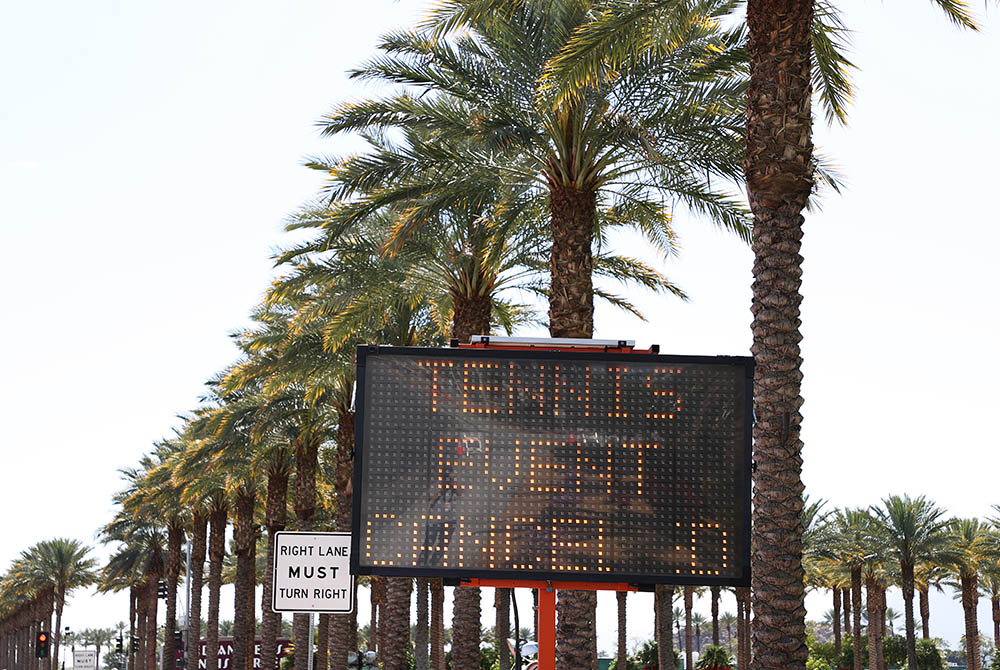By Giri Nathan
In the early days of a pandemic it is hard to peer around the corner—to know what lies ahead even two weeks from now, let alone three months. This is as true of grocery-store runs as it is of professional sports, which would be a welcome diversion right now but are not, for many good reasons, possible to play. This is not the time to congregate tens of thousands of people in the same place for a week or two. So the ATP and WTA, in a rare but welcome bilateral move—how about more of those?—have both wiped their slates clean until June 7. That would have been the final day of the French Open, so that’s gone. Points and rankings will be frozen on both tours. Players are getting creative to stay fit in quarantine, using towels and bottles of detergent where needed. Everyone and everything is on ice, cautiously waiting to see what happens.
Except, it turns out, for the French. The French Tennis Federation slugged the rest of its wine and stubbed its cigarette out on the calendar, smearing two weeks: Sept. 20 to Oct. 4. A hypothetical US Open ends Sept. 13. That would mean that two Slams, on two different surfaces, will be played within a week, in a year that already has the (also hypothetical) Olympics stuffed in there. If the back-to-back Grand Slam takes place, which seems pretty doubtful at this point, it will be mind-bending stuff. Basically a single-entry tennis ultramarathon for Novak Djokovic. It seems like the FTF just looked for the closest thing to a vacancy and threw their thing on there. These new French Open dates will nuke the Laver Cup, thus bravely committing the cardinal sin of any tennis event: pissing off Roger Federer.
Can’t piss off everyone, though. Guy Forget, Roland-Garros’ “tournament director,” gave a courtesy call to Rafael Nadal, Roland-Garros’ de facto tournament director. But nearly everyone else in tennis found out at the same time. As the Times tells it, the surprise announcement was made by the French Tennis Federation on a call with top ATP and WTA executives, without any consultation with the tours, or even the other Grand Slams, let alone the players. Which brings us yet another example of how the weird, patchwork nature of a professional tennis season—so many distinct entities with different incentives—can create some startling and confusing results.

The US Open, obviously, does not like the feeling of the French breathing down its neck. Here’s the USTA barely concealing its frustration: “At a time when the world is coming together, we recognize that such a decision should not be made unilaterally, and therefore the U.S.T.A. would only do so in full consultation with the other Grand Slam tournaments, the WTA and ATP, the I.T.F. and our partners, including the Laver Cup.” This is the closest thing to a beef you will see between two huge bureaucratic tennis bodies; enjoy it while you can (because it might be the last drop of enjoyment you’ll get out of professional tennis this calendar year).
It’s cruelest of all, of course, to the players. Vasek Pospisil, who has been working to organize the top 100 players on the ATP Tour in his own time, wrote his own strong remarks: “Enhancing communication & working together to find solutions should be the priority. Not going Rogue & making selfish/arrogant decisions to further impact the tour in a negative way.” True. If this pushes players toward increased solidarity, and possibly a strong players’ union, possibly even across both tours, then at least some tangible good could emerge from this crisis. If a Slam can get yanked within a week of another Slam—if some of the most important and lucrative weeks of your job can just get slung around the calendar, haphazardly, without any outside input—it’s probably a sign that the workers need to solidify their position in the workplace.
And that doesn’t even get to the players who don’t automatically qualify for the Slams, who live in more or less constant financial precarity. It’s one thing for endorsement-rich players who have to dip into their savings to wait out a shutdown; it’s another thing entirely for those players who needed those paychecks to keep their lives and careers in motion. What happens there? If this week is any indication, the tennis powers are hardly even looking out for the highest tier of players, let alone the ones whose livelihoods are most at risk.



